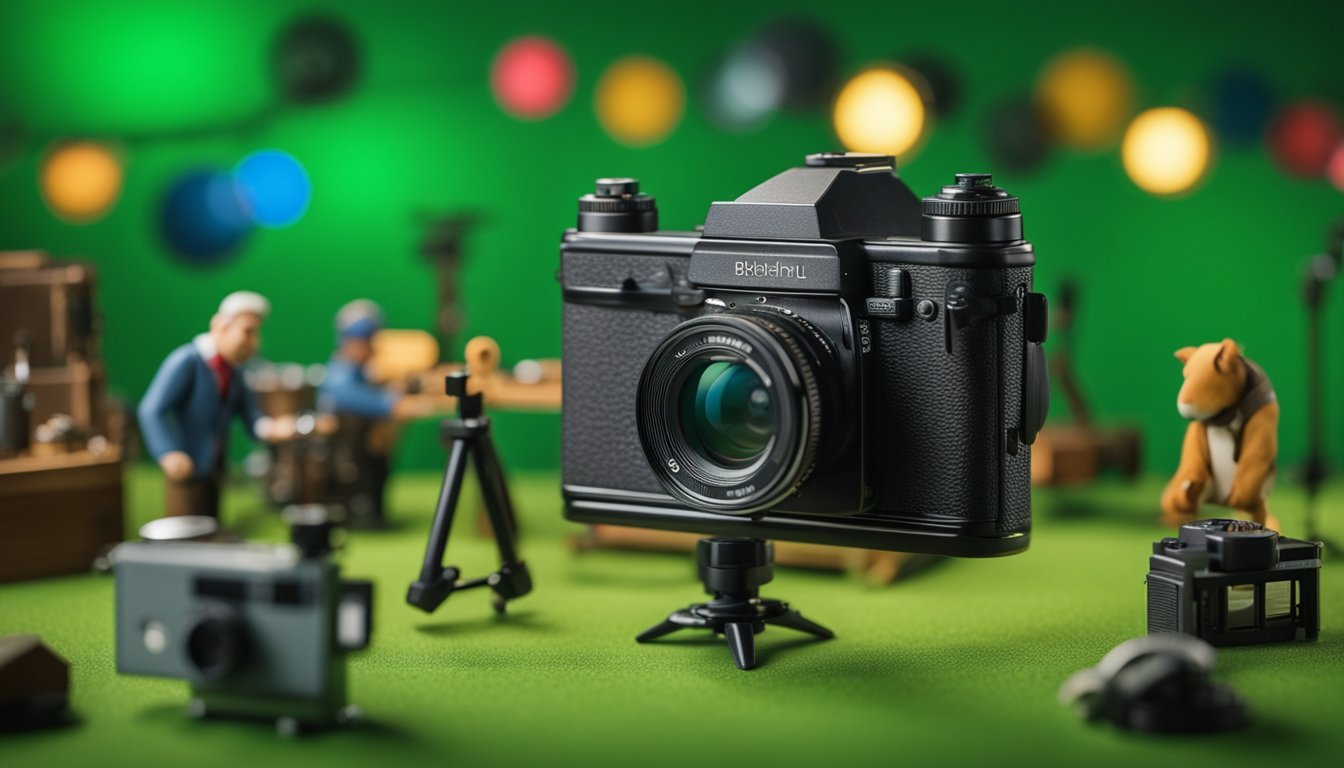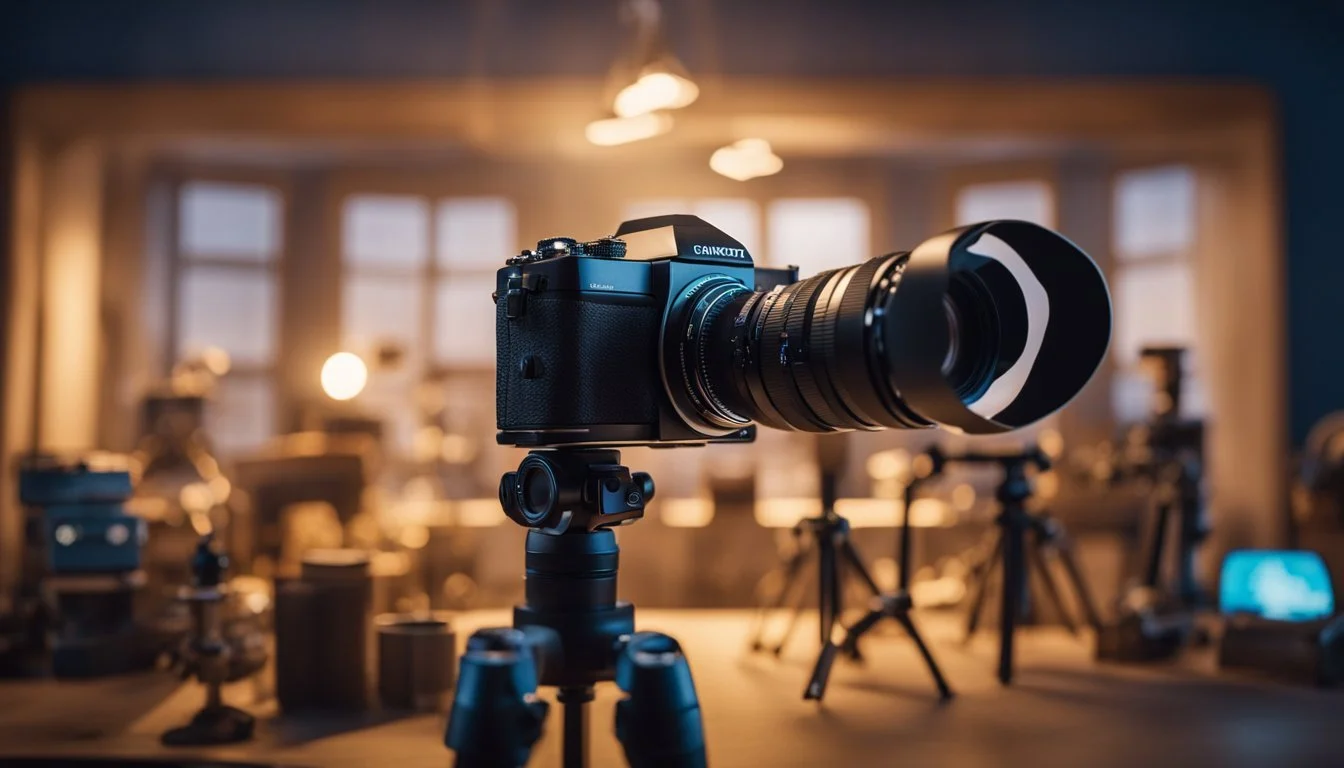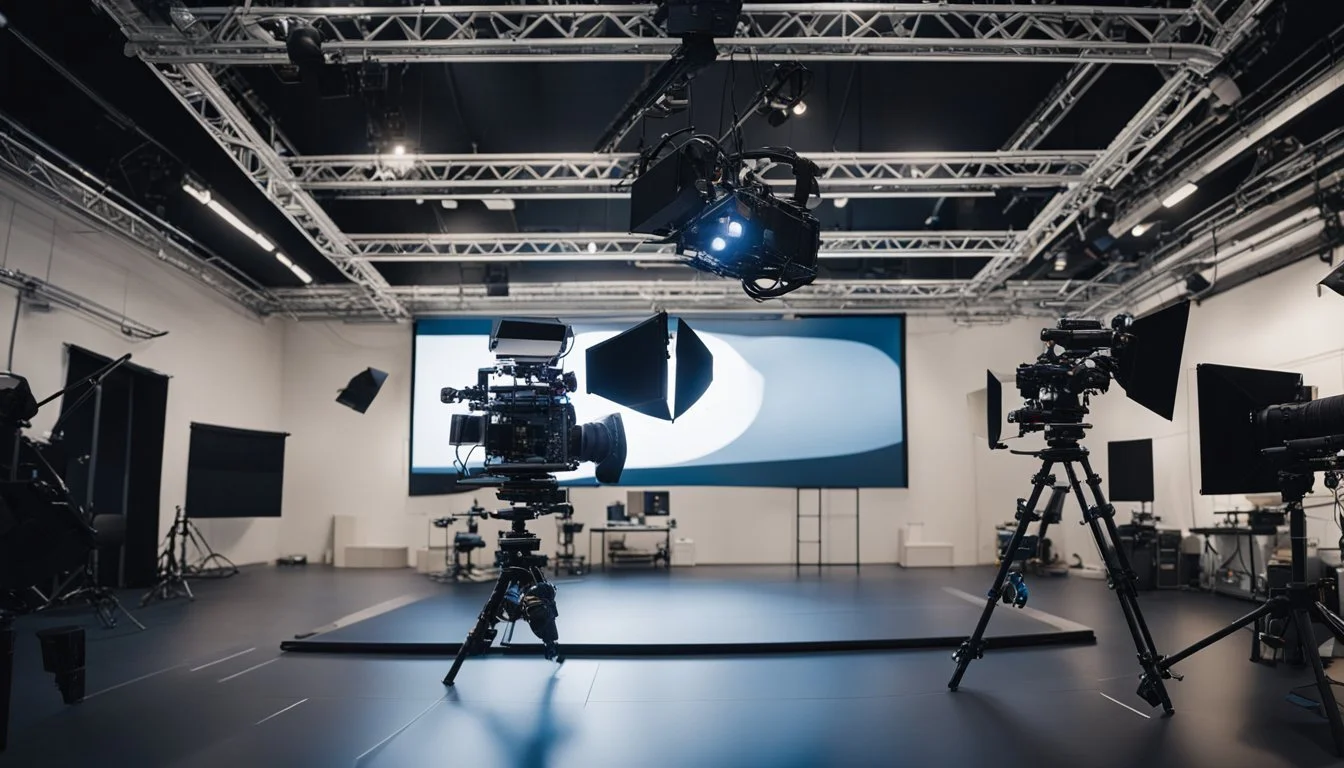Exploring the Intersection of Filmmaking and Animation Techniques
Merging Creativity and Technology
Exploring the intersection of filmmaking and animation techniques reveals how these art forms merge to create compelling visual narratives. Traditional animation methods, like hand-drawn or stop-motion, have evolved through technological advancements to include CGI and 3D animation, blurring the lines between purely animated films and live-action filmmaking.
The advent of digital technology has revolutionized the animation landscape. 2D vector animation, for instance, acts as a bridge between traditional and digital techniques, offering a unique blend of old and new methods. Filmmakers utilize these advancements to push the boundaries of visual storytelling, integrating motion design and animation to enhance the cinematic experience.
This blend of techniques allows filmmakers to craft intricate worlds and dynamic characters that captivate audiences. The convergence of these mediums continues to shape contemporary media, combining classical aesthetics with cutting-edge technology to enrich both the visual and narrative aspects of film.
Historical Evolution of Filmmaking and Animation
The journey of filmmaking and animation has been marked by significant milestones, from the early days of hand-drawn techniques to the integration of digital effects and computer-generated imagery. These advancements have allowed for a seamless blending of live-action and animated elements.
Early Cinematography and Traditional Animation
Early cinematography laid the groundwork for the development of animation techniques, introducing the world to moving images through devices like the phenakistoscope and the zoetrope.
Pioneers like J. Stuart Blackton and Emile Cohl were instrumental in experimenting with hand-drawn animations in the late 19th century. Blackton's Humorous Phases of Funny Faces (1906) and Cohl's Fantasmagorie (1908) are considered some of the earliest examples of animated films.
Walt Disney revolutionized traditional animation with the creation of Steamboat Willie (1928), featuring synchronized sound, and Snow White and the Seven Dwarfs (1937), the first full-length animated feature. The use of vibrant colors, captivating storytelling, and pioneering techniques like the multiplane camera brought depth and complexity to animated films, shaping the future of the medium.
Rise of Computer-Generated Imagery (CGI)
The advent of CGI in the early 21st century marked a seismic shift in animated filmmaking. Pixar's Toy Story (1995), the first feature-length film made entirely with CGI, demonstrated the potential of digital tools.
Films such as DreamWorks Animation's Shrek (2001) and Disney's Frozen (2013) showcased the capabilities of CGI to create detailed, lifelike characters and settings that were previously unattainable with traditional methods. The fundamental shift from hand-drawn to computer-generated animation enabled filmmakers to explore complex visual storytelling.
CGI technology not only enhanced the creation of entirely animated films but also allowed for the development of virtual environments, realistic textures, and nuanced lighting, setting new standards in the animation industry.
Hybridization of Live-Action and Animation
The blending of live-action and animation has led to innovative cinematic experiences. Who Framed Roger Rabbit (1988) seamlessly combined hand-drawn animation with live-action footage, using advanced techniques for integration.
More recently, films like James Cameron's Avatar (2009) employ motion capture technology to blend CGI characters with live-action elements. The success of Marvel's Avengers series also highlights this hybridization, where actors perform with motion-capture suits to bring animated characters to life.
This hybrid approach has expanded storytelling options, allowing filmmakers to create visually stunning worlds where animated and live-action characters coexist, pushing the boundaries of what is possible in cinema.
Fundamentals of Filmmaking
Filmmaking involves a sequence of carefully planned stages that transform concepts into visual stories. Key elements include scriptwriting, cinematography, and post-production techniques.
Scriptwriting and Storyboarding
Scriptwriting is the foundation of any film. Crafting a compelling narrative with well-defined characters and plot points is essential. The script guides the entire production, ensuring that the story flows logically and emotionally resonates with the audience.
Storyboarding follows scriptwriting and involves visually mapping out scenes. Storyboards act as a blueprint, detailing shot compositions, camera angles, and movements. This stage helps directors and cinematographers visualize the film before shooting begins, aligning the team on the creative vision.
Cinematography Techniques
Cinematography is the art of capturing the visual elements of a film. Techniques such as lighting, camera angles, and shot composition play a crucial role in storytelling. Low-key lighting, for instance, creates a moody, high-contrast atmosphere ideal for suspenseful scenes.
Different camera movements like pans, tilts, and dolly shots add dynamic elements and maintain viewer engagement. Effective use of lenses and focus further enhances the visual narrative, contributing to the film’s overall aesthetic and emotional impact.
Editing and Post-Production
Editing is where the film truly comes together. In this phase, editors arrange footage, trim unnecessary parts, and fine-tune pacing. The goal is to create a coherent and engaging story that aligns with the director’s vision.
Post-production also involves sound editing, color correction, and visual effects. Adding soundtracks, dialogue, and ambient sounds enriches the film’s atmosphere. Meanwhile, color grading adjusts the visual tone, making scenes more visually appealing and consistent. The integration of VFX can transform simple shots into complex visual spectacles.
By understanding these key facets, one gains a deeper appreciation of the intricate process behind filmmaking.
Core Principles of Animation
Animation, whether traditional or digital, relies on core principles that bring characters and worlds to life. These principles guide animators in creating compelling visuals and believable motion.
Traditional Animation Techniques
Traditional animation, also known as hand-drawn animation, lays the foundation for all animation types. Key principles include Squash and Stretch, which adds flexibility and weight, and Anticipation, which prepares the audience for action.
Staging involves setting up scenes to direct the viewer’s attention, while Straight-Ahead Action and Pose-to-Pose techniques provide different methods of drawing sequences. Mastery of these principles allows animators to craft fluid, engaging animations.
Digital Animation Workflows
Digital animation builds upon traditional techniques but uses technology to streamline processes. Software like Adobe Animate and Toon Boom Harmony are essential tools. Techniques such as rigging allow for precise control of character movement, while motion capture provides realistic human motion.
Digital workflows incorporate layers and keyframes, speeding up the production process and enabling animators to make quick adjustments. The ease of duplicating assets and applying effects improves efficiency without compromising quality.
Character Design and World-Building
Character design is crucial for establishing personality and relatability. Effective design considers proportions, color schemes, and unique traits that stand out. Silhouette testing ensures that characters are easily recognizable in any pose.
World-building provides the context and environment where characters interact. This involves designing backgrounds, props, and scenery that complement the narrative. Cohesion in visual style and attention to detail create immersive experiences that captivate audiences.
By understanding and applying these core principles, animators can produce high-quality, emotionally resonant work that stands the test of time. Individual creativity, combined with these foundational techniques, paves the way for innovation in the field.
Integrating Filmmaking and Animation
The integration of filmmaking and animation has opened new horizons for creating visually stunning and immersive narratives. Key areas of this intersection include visual effects (VFX), motion capture technology, and 3D modeling, each contributing uniquely to the industry.
Visual Effects (VFX) in Modern Cinema
Visual effects (VFX) have become a cornerstone of contemporary cinema, enhancing storytelling with captivating visuals. VFX allows filmmakers to create scenes that would be impossible or impractical to shoot in real life.
Techniques such as CGI (Computer-Generated Imagery) and compositing enable the seamless blending of live-action footage with digitally created elements. This integration can transport audiences to fantastical worlds or depict intricate details that enrich the narrative. VFX continues to evolve, pushing the boundaries of what can be achieved on screen.
Motion Capture Technology
Motion capture technology records the movement of objects or people and translates it into digital form, providing a lifelike quality to animated characters. This technology has been transformative in both live-action and animated films.
Actors wear specialized suits with markers that capture their motions, allowing animators to overlay these movements onto digital character models. Films such as Avatar and The Lord of the Rings have effectively used motion capture to bring CGI characters to life with realistic expressions and gestures. The precision and efficiency of this technology have revolutionized the way complex scenes are produced.
3D Modeling and Its Cinematic Applications
3D modeling involves the creation of three-dimensional objects within a digital environment, contributing significantly to the filmmaking process. These models can be used for characters, settings, and props, providing detailed and adaptable elements that can be manipulated as needed.
In films, 3D models allow for the visualization and execution of scenes that challenge practical effects. For instance, entire cityscapes or detailed creatures can be built and rendered in 3D, offering unparalleled creative freedom. This technique not only supports visual storytelling but also optimizes production workflows by enabling pre-visualization and iterative design adjustments.
Technological Advances
Recent advancements in technology have significantly reshaped the landscape of both filmmaking and animation, introducing new tools and methods that revolutionize the creative process. Virtual Reality (VR), Augmented Reality (AR), and Artificial Intelligence (AI) are at the forefront of these innovations.
Virtual Reality (VR) in Filmmaking
VR offers filmmakers the ability to create immersive environments that engage viewers like never before. Through headsets, audiences can enter a three-dimensional world, experiencing narratives from a first-person perspective. Interactive storytelling and 360-degree videos provide new dimensions in narrative techniques. Filmmakers use VR to design detailed virtual sets, reducing production costs and allowing more creative freedom in exploring storytelling possibilities.
Augmented Reality (AR) and Interactive Storytelling
AR brings digital elements into the real world, blending virtual experiences with physical environments. This technology enhances interactive storytelling, allowing filmmakers to overlay animations and special effects onto live-action footage. AR applications on mobile devices or AR glasses enable viewers to interact with animated characters or elements in real time. These interactive elements create an engaging narrative experience and provide unique opportunities for educational and promotional content.
Artificial Intelligence in Animation
AI is transforming animation by automating complex tasks. Machine learning algorithms assist in generating realistic character movements, facial expressions, and even voice synthesis. AI streamlines the animation process, reducing the time required for repetitive tasks. Tools like deep learning and neural networks enable animators to create lifelike characters and dynamic scenes. Moreover, AI enhances predictive texturing and shading, producing higher-quality visual effects and animations. These advancements allow animators to focus more on creativity and storytelling rather than technical execution.
Case Studies
Several key films showcase the intersection of filmmaking and animation techniques. These examples illustrate how different approaches can enhance storytelling and visual impact.
The Use of Animation in Blockbuster Films
Blockbuster films often utilize advanced animation techniques to create visually stunning scenes and realistic characters. For instance, "Avatar" by James Cameron revolutionized the industry with its use of motion capture and computer-generated imagery (CGI). The film blended live-action performances with digital animation to create an immersive experience.
In "The Lion King" (2019), Jon Favreau employed photorealistic CGI to reimagine the classic animated film. The use of virtual reality technology allowed filmmakers to visualize and plan scenes in a virtual environment, ensuring seamless integration of animated elements with live-action techniques.
Another notable example is "The Avengers" series, which uses a combination of CGI and practical effects to bring superhero characters and action sequences to life. These films demonstrate how animation can elevate visual storytelling in high-budget productions.
Independent Films Blending Techniques
Independent films often experiment with various animation techniques to achieve unique visual styles and narratives. "The Triplets of Belleville" (2003) by Sylvain Chomet employs traditional hand-drawn animation to create a distinctive, quirky aesthetic that stands out from mainstream films.
"Waltz with Bashir" (2008) by Ari Folman blends documentary and animation to explore complex themes. Using a mix of Flash animation and 3D techniques, the film presents a visually rich and emotionally compelling narrative.
Another example is "Persepolis" (2007) by Marjane Satrapi and Vincent Paronnaud, which uses black-and-white animation to depict the autobiographical story of a young girl growing up during the Iranian Revolution. The stark, illustrative style conveys the gravity and nuance of the subject matter.
Independent films highlight the versatility of animation techniques, demonstrating that creative approaches can lead to powerful storytelling.
Future Trends in Filmmaking and Animation
The future of filmmaking and animation looks promising with several exciting trends on the horizon. These trends are set to shape the way content is created and consumed.
Real-time Rendering has become a major focus. This technology enables live interaction with virtual environments, creating seamless and immersive experiences. Filmmakers are leveraging this to bring more dynamic scenes to life.
Virtual Production is revolutionizing the industry. Using digital sets and characters, filmmakers can preview scenes in real-time, reducing costs and increasing efficiency. This integration enhances creativity by allowing instant adjustments.
Cross-platform Animation is gaining traction. With the proliferation of mobile devices and social media, animators are designing content that adapts to various platforms. This ensures a consistent viewer experience regardless of the screen size.
Sustainable Animation is emerging as a vital trend. The industry is moving towards eco-friendly practices, such as reducing waste and using renewable resources. This shift is not only ethical but also cost-effective in the long run.
3D Animation is evolving rapidly. Though 2D animation has been popular for years, advancements in 3D are pushing boundaries. Engaging and visually stunning, 3D animation is becoming more accessible to creators.
Artificial Intelligence (AI) is making a significant impact. AI tools assist in various stages of production, from scriptwriting to editing. These tools improve efficiency and open up creative possibilities.
Interactive Storytelling is transforming how stories are told. By integrating interactivity, viewers can influence the narrative, creating a more engaging experience. This trend is particularly popular in animated content and games.





